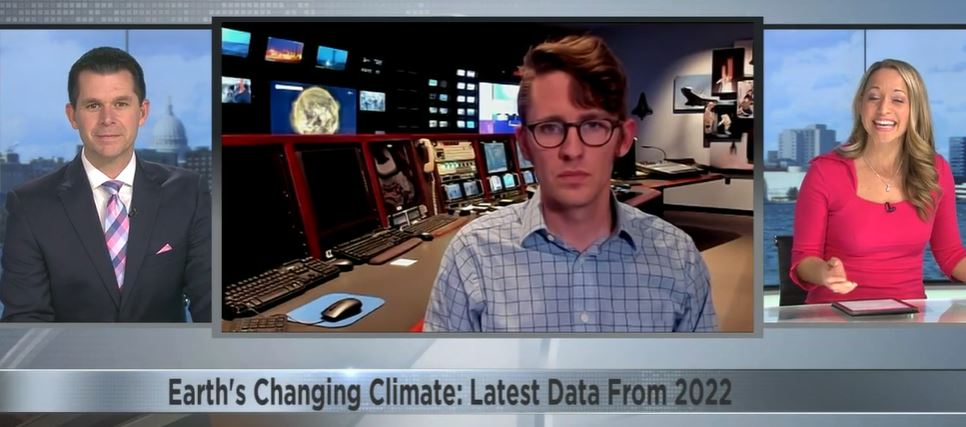ESSIC Scientists Patricia Parker and Weston Anderson recently participated in the NASA Live Shots media campaign, which resulted in a series of media interviews about the NASA/NOAA global temperature update.
“Every year, NASA and NOAA independently analyze more than 26,000 weather stations as well as data about the ocean from ships and buoys, to assess the global temperature changes,” said Parker in an interview with KWQC-TV, an Iowan television station, “This year, NASA found 2022 to be tied for the fifth warmest year on record, alongside 2015.”
She goes on to explain that 2022 was a La Niña year, which would usually lead to cooler global temperatures. 2022’s heat despite this tells us that the warming trend continues, and that the effects of climate change are already here.
Anderson spoke to WKOW 27 in Wisconsin among other outlets about how global temperatures have warmed by 1.1°C. Though this sounds small, Anderson compares it to the last Ice Age, which was 5°C colder than temperatures today and resulted in ice sheets covering North America.
“This 1.1°C change is really supercharging a lot of extreme events including wildfires, heatwaves, and making precipitation extremes larger and more intense, including those affecting California the last couple of days,” said Anderson.
Anderson and Parker highlighted the importance of satellite data, noting that having real time observations can help us understand climate extremes in regions that are difficult to access or poorly observed from ground-based observations.
“Our job at NASA and NOAA as scientists is to provide the best data that we can and the most up-to-date information to the public and to the policymakers to make decisions about issues that are going to affect us now and in the future,” said Parker.
Patricia Parker is an Assistant Research Scientist with ESSIC working in the Hydrological Sciences Lab at NASA Goddard. Her work focuses on the modeling, analysis, and prediction of human impacts to the water and energy cycles.
Weston Anderson is an agroclimatologist studying the dynamics of climate variability and its relation to food security using reanalysis products, remote sensing observations and model simulations. He is an Assistant Research Scientist at the Earth System Science Interdisciplinary Center at UMD working with the Famine Early Warning System Network (FEWS NET) and the NASA Hydrological Sciences Lab.







